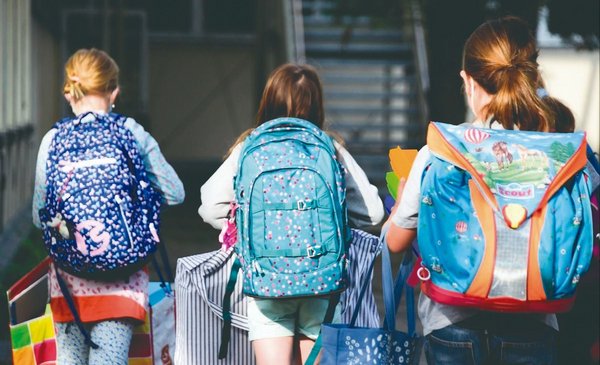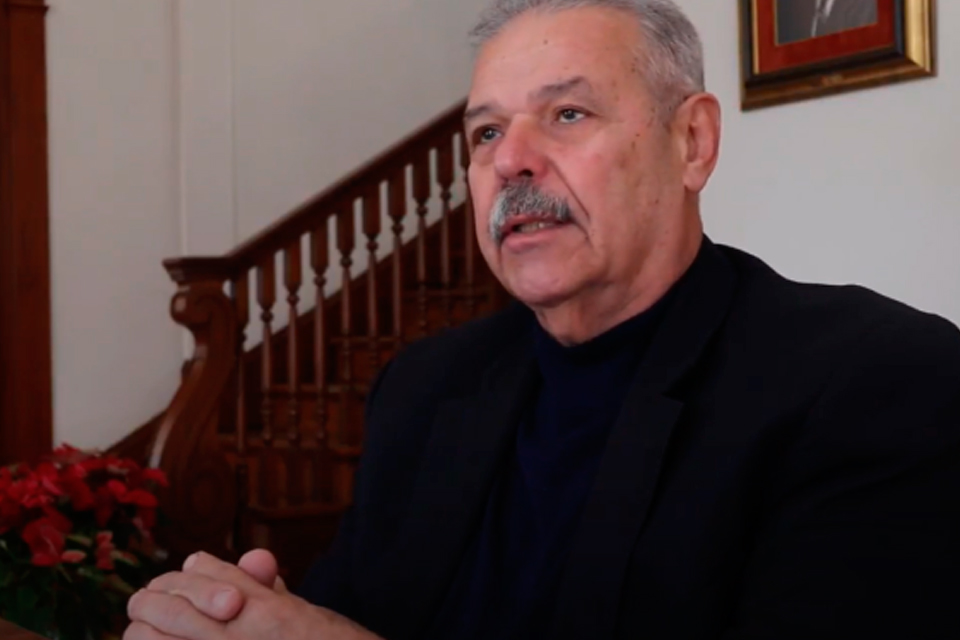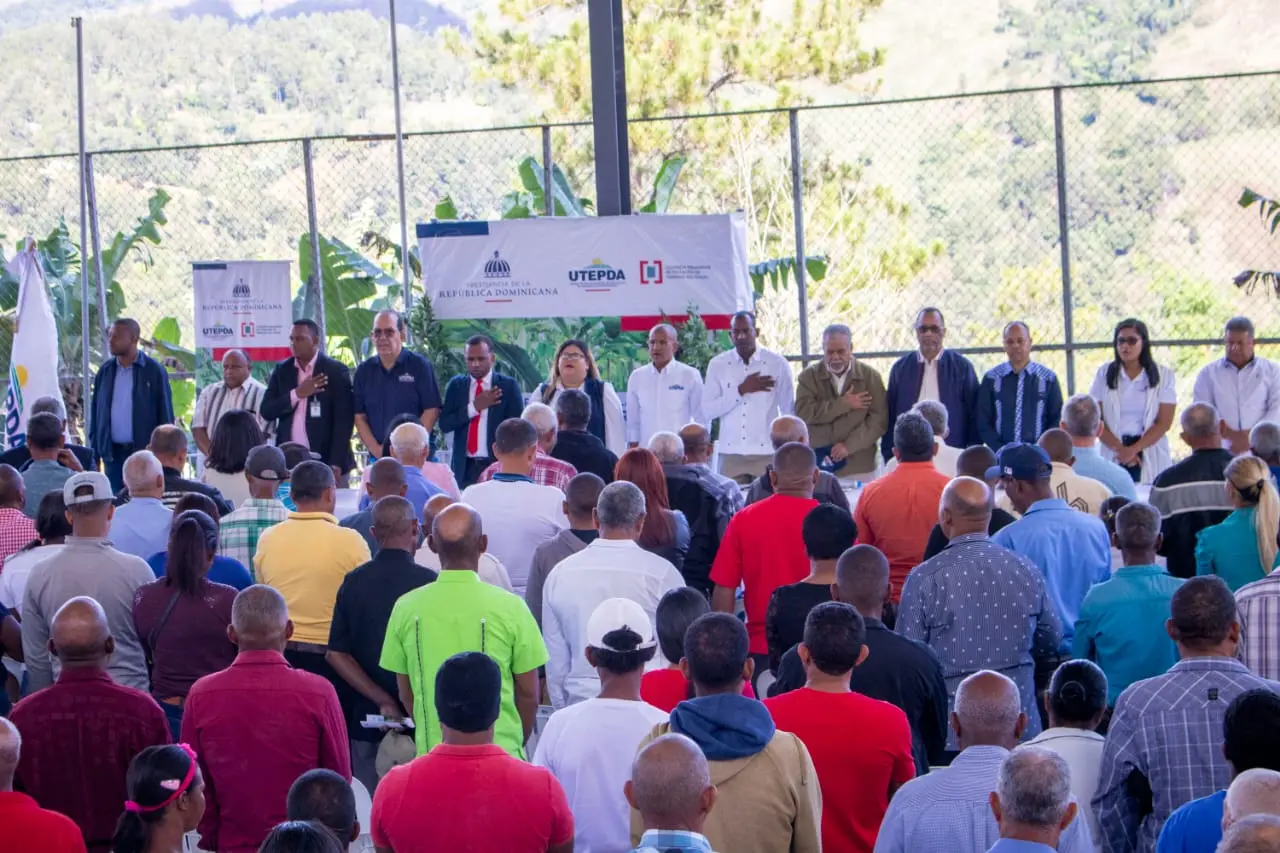On the border of the La Aguada and Arroyo Seco neighborhoods, between warehouses and disarmed factories, lies a survivor. The Inmaculada Concepción school opened its doors more than a century and a quarter ago, the same year that Uruguay instituted compulsory civil marriage, when the church was still immersed in the State and when the word “lyceum” was only a reference to the campus where Aristotle taught. Its student benches were occupied by schoolchildren who came from the most remote neighborhoods and at the time of the Maracanazo the corridors were packed with children playing hopscotch or payana. But This December, after the obligatory end-of-course festivities, the historic institution will close forever. She couldn’t stand the void.
They say that crises in private education occur in slow motion: first there is an economic crisis in the country, then the parents ask to refinance the fees, later bonuses are requested, they go to another lower-cost school and, in the end, there is a flight of students to the public sector. It happened in La Tablita in 1982, in the bankruptcy of 2002, and covid-19 was no exception. Although this time “is different.”
In the last two years, an eighth of the private kindergartens —whose official name is private early childhood centers— have closed, and “the risk of closing (by 2023) is greater than other years,” he acknowledged The Observer Bettina Taibo, president of the garden collective that arose to alleviate the crisis.
Because although the case of these kindergartens —which are the ones that do not have a large school behind them and that compete with the expansion of the CAIF— is an extreme example of agony, the accountant Aníbal González, who for a decade has worked in the school finances and now offers consultancies in the Aula Group, recognizes that Uruguayan private education is at a turning point: they are facing increases in salary costs above inflation, they have run out of reserves, they have made bonuses more flexible to retain the students, there was internal migration, economic crisis and now they are surfing the biggest drop in child births since records exist in Uruguay.
The result is empty chairs. González estimates that between 12% and 20% of the available space in the classrooms is unoccupied. And, except for the extraordinary examples of some schools in Punta del Este or the coast of Canelones, waiting lists no longer exist.
The Observer reported this week the closure of the Lester House school, the end of the high school cycle in Nuestra Señora del Rosario and the temporary withdrawal of the Queen’s School first-year secondary groups. But the accountant González insists that “if there are no administrative improvements and changes in the private education financing policy (in the subsidy) everything indicates that we will witness more closures or mergers of institutions.”
The vacuum
Uruguay is emptying itself of children. Each woman of childbearing age has, on average, only 1.37 children. In the last six years, the number of live births fell at a rate that demographers did not even project for after 2050. And in the most residential neighborhoods, children under the age of 5 represent less than 4% of the population (when less than 5 years ago). a decade were between 6% and 10%).
This trend —shared by a large part of modern societies, but which in Uruguay is being faster than its peers in the region— impacts one of the basic foundations of the market economy: the demand.
In fact, the Udelar Population Program and the ANEP projected that, by the time the World Cup is held in By 2030, compulsory education will have lost more than a quarter of its enrollment.
Behind this scenario there is, however, some good news. The first that demographers clarify is that more than half of the drop in births in the last five years is the result of a notable drop in adolescent pregnancy. They now decide when and how many children they want to have. And that brings with it another piece of good news: if adolescents don’t get pregnant, they have a better chance of remaining in the educational system and completing compulsory studies.
For Gonzalez, “The drop in births is being felt, especially in neighborhoods with a lot of offer like Pocitos or Buceobut it is a cause that is taking place in drops and that does not explain the entire crisis ”.
The negotiation
When former President Tabaré Vázquez was two years into his first term, the wage councils resurfaced. That policy resumed in 2007 —which is celebrated by workers as a right— led to financial changes in the schools. Happens that between 80% and 85% of the costs of the institutions are for staff remunerationand, given that in many cases the salary was very submerged, the pay of teachers and other officials was felt in the pockets of the schools.
“As most schools understand that they are non-profit and due to administrative problems, many did not protect themselves with reserves, the increase in salaries above inflation was transferred to the value of the fees paid by parents,” explained the accountant. Gonzalez.
Between 2007 and 2021, general product prices tripled, but school fees increased fivefold. Conclusion: “the cost of private education occupies an increasingly larger portion of the pie in the expenses made by families and schools no longer have much room to lower fees,” said the accountant.
For kindergartens that do not belong to large schools —those that typically have cartoon names— the costs “also make themselves felt in other demands: such as paying for a preventive doctor or other policies that are very good, but that pay for them non-profit institutions,” said Taibo from the garden collective.
In this sense, added the director, “it is impossible to compete with irregular gardens or those informal caregivers to whom parents entrust the protection of their children.” Refers to what The INAU, on which the early childhood centers depend, received more than 20 complaints so far this year for non-licensed institutions or informal day care centers.
In a pandemic, for example, it happened that some parents asked a woman to take care of five or ten very young children in exchange for a modest sum of money. “This is a problem for the formal system: because there is no educational project, because there are no state controls and because no one can ensure that these children are protected against abuse or mistreatment,” Taibo complained.
These kindergartens also have the competence of the CAIF that have been expanding and of the private schools that capture population from an early age and assure parents the continuity of their child in the same institution.
According to the consultancy Opción, based on different studies carried out in Montevideo, “the motivations linked to the choice of private schools are distributed in equal parts between three attributes: proximity, values and trust in the institutions and the educational proposal” , explained the sociologist Agustín Bonino. “The price is in a second level behind the mentioned attributes.”
the covid effect
When the drop in births and financial problems were already taking their toll, one day a virus appeared that fits 400 times the thickness of a human hair: the coronavirus. The health emergency closed schools for several months, paralyzed economic activity, changed families’ pockets, and changed social behavior. All this influenced private education.
There was a loss of jobs that translates into parents who lost income to pay for their children’s school. There were investments in distance education, requests for more scholarships and moving. And there was even an unexpected effect: the flexibility of work.
Imagine a father who lives on the coast (from Montevideo or Canelones) and whose office is in the center of the capital. Before —before labor flexibility— he sent his son to a central school in the vicinity of his workplace. Now that he can telework or that he has a chance to stay at his home for a few days, perhaps he enrolls his child in the coastal school near his home address.
“This migration is a very recent phenomenon that only became noticeable in 2022, because families let go of the first two years of uncertainty of the health emergency and now that they know that teleworking is here to stay, they rotate from school,” explained González.
The Center of Montevideo “is the area that is suffering the most from this phenomenon, followed by Pocitos and the southeast coast”said the accountant. As a counterpart, there was a slight increase in enrollment in some schools in Canelones (from the exit of the capital to Atlántida), and a certain boom in eastern Maldonado (associated with the arrival of Argentine citizens).
And now that?
Enrollment in private education continues its downward trend. According to the update of data that Primary made at the request of El Observador, in the last six years there was a drop of a quarter of the initial student body. And nothing suggests that there will be a setback in the short term.
Demographers do estimate that “there will be a rebound effect before the end of this decade” and many women who are past the age at which they have their first child will have one at some point. That could take a breather.
But for the accountant González it will be necessary to think about “longer-term policies”. He refers to the fact that Uruguay “is one of the countries where there is more divorce between the public and the private”, when in other countries “The solution is happening because the State subsidizes part of the private education that the parents choose.”
González admits that his position can be controversial and that he encounters ideological resistance, but, in his opinion, “good private education is necessary that competes with the public sector and requires a constant improvement of its quality.”







